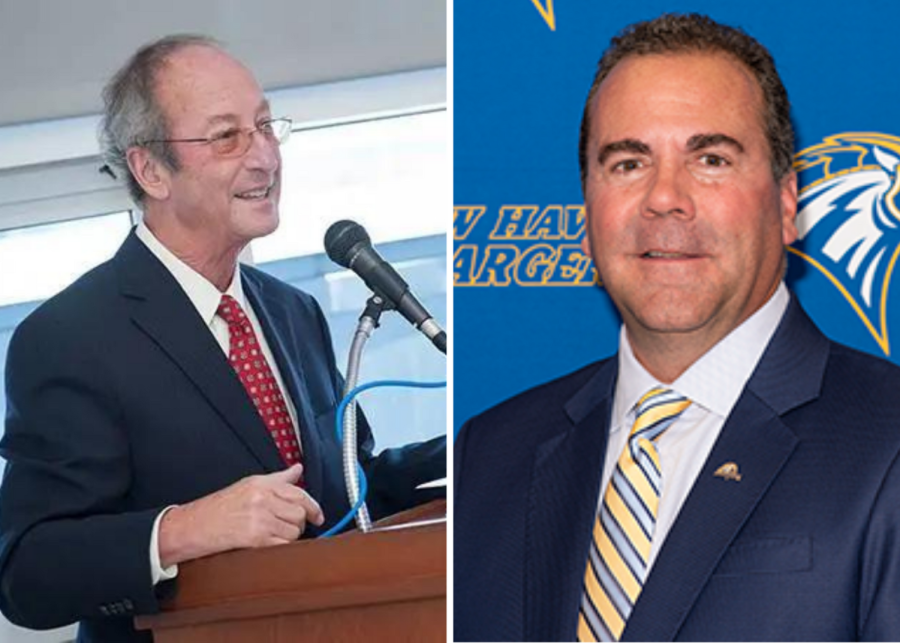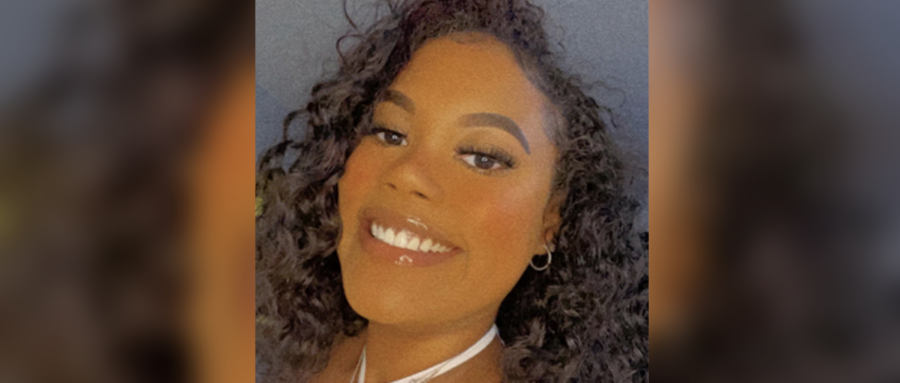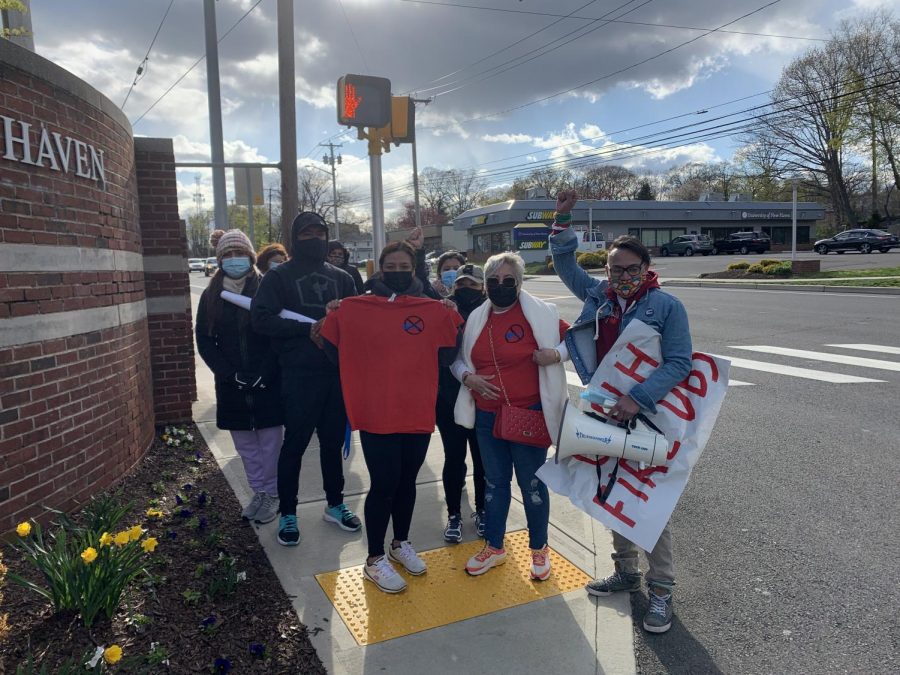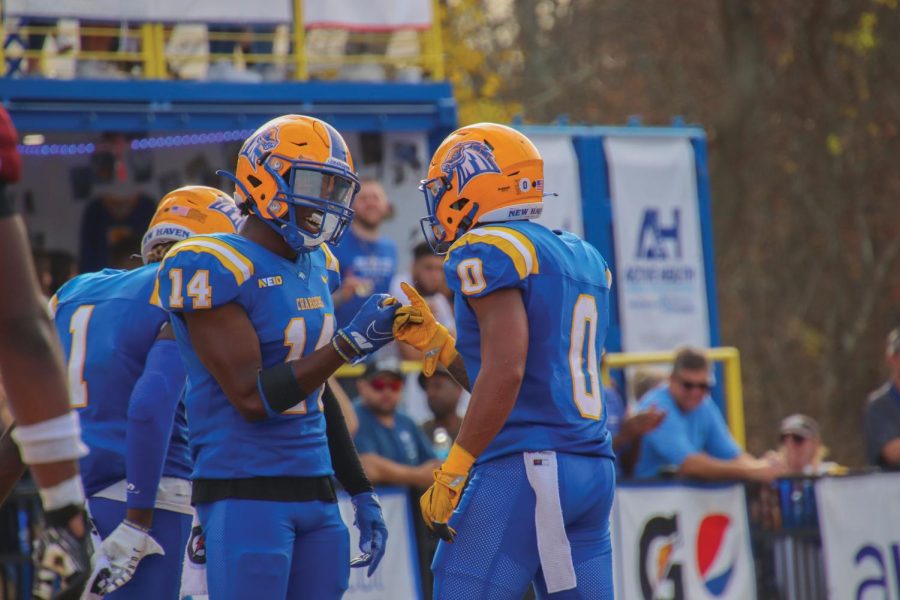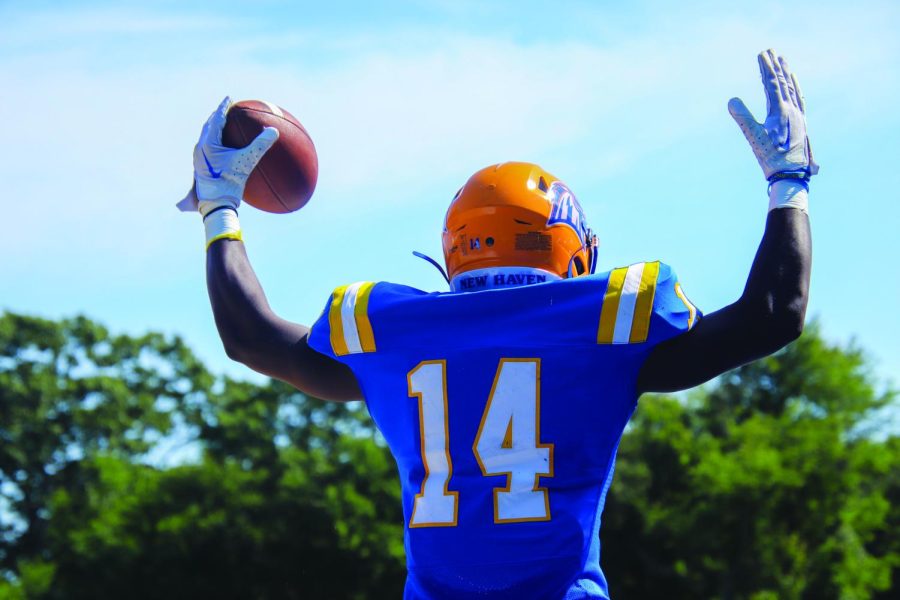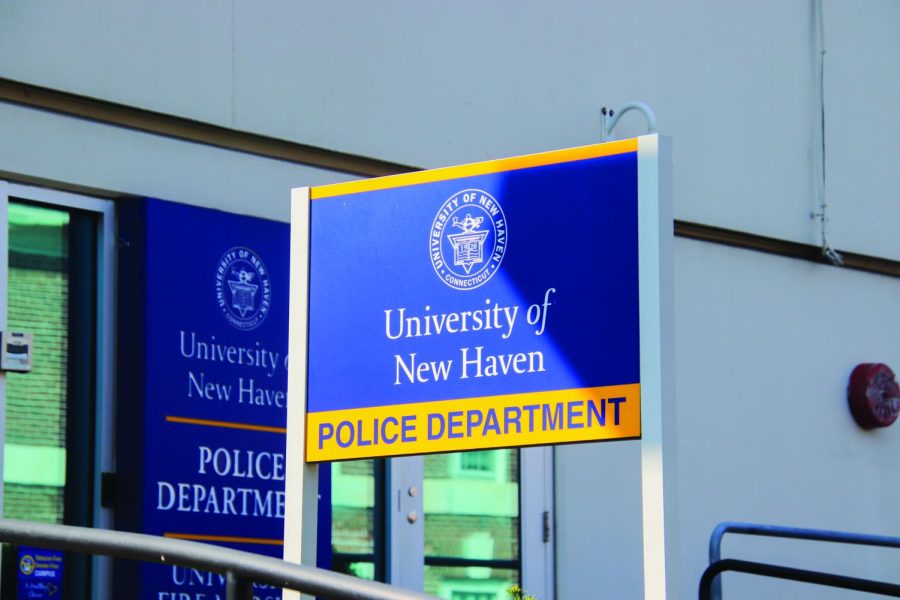Rebecca Tenbuuren had a vision for the University of New Haven campus, and that vision included a bronze Charger statue that symbolized campus pride and tradition.
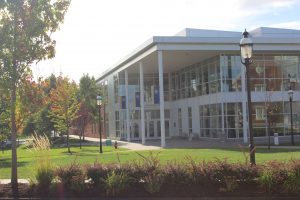
the Beckerman Recreation Center and Bayer Hall
(Photo by Samantha Reposa/Charger Bulletin photo)
Tenbuuren, a junior majoring in Interior Design with a concentration in Pre-Architecture, and minoring in Graphic Design, sent a PowerPoint presentation, which outlined her proposal for a bronze casted statue of a Charger warhorse, to over 60 recognized student organizations on campus in early September to generate interest and support for her idea.
Tenbuuren’s research includes different statue options and prices, possible placement on campus, examples of mascot statues on other college campuses and how to get students involved with the statue. She also explains why she believes a Charger statue would be an important addition to the UNH campus.
She initially had the idea for a Charger statue a year ago as she walked around campus and took note of all the different art sculptures scattered throughout the grounds. While the artwork is beautiful, she said, she thought that a statue of the Charger, which is the official mascot of UNH, would mean more to entire campus.
“It’s something that everyone at our school has in common,” Tenbuuren said.
She spent the majority of the last year contacting different companies and getting prices for the statue. She has five different options for possible statues, and included a breakdown of the different costs included.
“On campus, you can see many students wearing the colors of our school, sweatshirts and sweatpants that say University of New Haven and many cars with window stickers saying the same,” she wrote in her presentation. “However, these students are not permanent parts of this campus, every year students leave and new students come in. Therefore, the amount of school spirit changes with the classes. I believe that we need a permanent statement on campus to show our school spirit, not only to our community, but to visitors as well.”
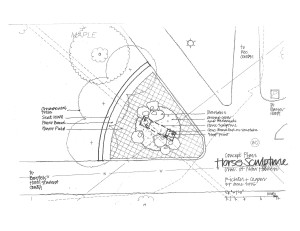
(Photo provided by Louis Annino)
There are a lot of aspects that have to be considered before the idea of a Charger statue can be turned into a reality.
“The purpose of the statue would have to be defined,” Rebecca Johnson, Associate Vice President of Student Affairs and Dean of Students, said. “Is it a symbol of the University of New Haven? Is it to show school spirit? Is there a tradition to be incorporated? Where would it be placed to be visible to students, faculty, staff and visitors?”
Tenbuuren first suggested the statue be placed in the center of Maxcy Quad in her PowerPoint.
“To me [Maxcy Quad] is the center of our campus and students walk through this quad multiple times a day,” she said.
She also suggested a center garden where the statue can be placed, with benches as well.
“I don’t want to just put a statue down anywhere on campus; I want to create a whole scene around the statue that the community can appreciate.”
However, according to Johnson, the center of Maxcy Quad is not a possible location for the statue. The quad was restructured years back to form a route for emergency vehicles. The center sidewalk that stretches though the quad diagonally was built to support the weight of firetrucks, and the path must remain clear in case of emergencies.
A secondary location Tenbuuren considered in her research was in the green between the Beckerman Recreation Center and Bayer Hall, the admissions building. Tenbuuren mentions that in that particular placement, everyone coming into campus, from faculty, students, guests, prospective students and their families, and visiting athletes will see the statue.
“It would be an everlasting image and really be a statement piece for our campus,” she said.
“The area by the Recreation Center might not be a bad place,” said Johnson. “It’d be in between the academic buildings and the residential halls, right by the admissions building…it’s a positively defined spot.”
Louis Annino, Associate Vice President for Facilities, is in full support of a Charger statue; in fact, it is something that he and the Facilities Planning Committee have been talking about for a while now.
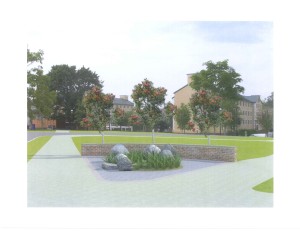
(Photo provided by Louis Annino)
The Facilities Planning Committee is an advisory board—chaired by Annino and made up of University officers and other key stakeholders, such as facilities, sight safety and information technology—that meet routinely to talk about campus planning and provide direction to President Kaplan for capital investments and campus improvements.
Annino believes that a Charger statue would be best placed in the area by Bayer Hall and the Rec Center; he has had plans and blueprints already drawn out from previous proposals and is very receptive to new ideas.
Annino said that he thinks the second location Tenbuuren suggested works because most visitors drive past it when they visit the school for the first time, and that in that way, it will grab attention.
Johnson, who is also apart of the Facilities Planning Committee, also believes that the Athletic Department should be consulted, as the Charger is the symbol and mascot of all UNH athletic teams. She believes that how the statue looks can say a lot about both the school and the athletic program. “Is it fierce? Friendly? Scary? What does the statue say by its stance and the look on its face?”
Greg Overend, Director of Student Activities, believes Tenbuuren’s plan is a realistic idea that has the potential to generate a lot of school spirit.
“I would love to see [a Charger statue] happen, and she [Tenbuuren] is very well prepared.”
Overend, who also oversees Student Orientation Advising and Registration, the summer orientation program, said he could envision the Charger statue as a good way to start a tradition on campus. “I would love to make it part of the SOAR experience. We could have students rub the hoof during orientation as a freshman and rub the tail after graduation, or something like that.”
Tenbuuren’s research even considers possible concerns about the statue, including the harsh Connecticut winter weather and the possibility of students climbing the statue.
“With every statue, the worry is people climbing it and mounting it,” she said on a slide titled ‘Possible Worries.’ “Before, there was the idea of getting fiberglass statues but with the former concern, I am looking now at bronze casted statues that can hold up to the weight of people if this does happen.”
Tenbuuren wants to get as many organizations, and, by extension, as many people on campus involved with this idea. She plans to reach out to the Undergraduate Student Government Association in order to make sure that the Charger statue is something that all students on campus hear about and have a chance to support.
One of Johnson’s questions included the funding for this project. “Where is the money going to come from?” she asked.
Tenbuuren said that she’d like to see if organizations on campus would be interested in fundraising the money for the statue. In this way, the statue would be paid for by the students, which Tenbuuren thinks is a good way to show that the students want the statue and will work for it.
Annino believes that this statue would be “a relatively affordable thing.” A Charger statue resonates with current undergraduate and graduate students, as well as alumni. Because of this, he thinks that this proposal has the possibility of generating a lot of alumni support in terms of funding.
“This is something that we want to be a representation of our campus. It could help students feel more connected to the school,” Johnson said. “It’s definitely a community builder—we have a strong sense of community but we can always add to it.”



